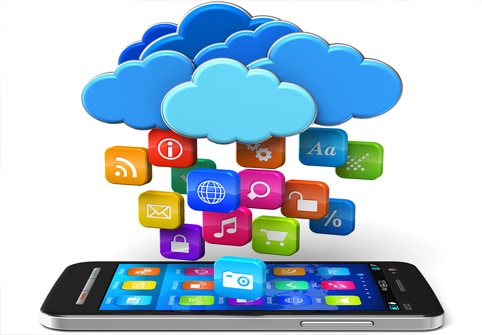4 Steps to Making BYOD Work

Sig Behrens, President at Blackboard Inc.
Just a few years ago, the “smart money” for school districts was on 1:1 computing where schools issued each student a laptop. While there is a role for 1:1 initiatives, increasingly the dialogue has evolved to bring-your-own-device (BYOD), which focuses on the use of student-owned mobile devices, and for good reason. Research shows that “active learners” (students who have grown up with technology and expect it to be readily available) want to bring their own devices to school – and are driving changes in mobile phone use policies.
Blackboard Inc. and Project Tomorrow’s Speak Up National Research Project found that in the fall of 2010, nearly 50 percent of middle and high school students said they carried some type of smartphone – a 47 percent increase from fall 2009. The National School Board Association found that 63 percent of students use mobile devices in schools, even when prohibited.
But what does an effective BYOD policy look like? And how are districts overcoming the biggest challenges of mobile adoption: equity and access?
I’m learning a lot from the innovative schools and administrators Blackboard works with – educators who are successfully leveraging technology to enhance learning experiences for their students. They first tackle the real issue of how they want to use technology to improve teaching and learning. As a result, they create a clear strategy before making a purchase or developing a policy. Here are some effective practices from clients who went down the BYOD route.
Getting Started
If a school decides to adopt BYOD, a further challenge lies in finding the budget to not only to get a program off the ground, including bandwidth for school buildings and devices for students who don’t have them, but to maintain it. Several schools are overcoming this hurdle by seeking donor and government support according to Education Week’s Mobile Learning Costs Add Up report:
- Through donated funds, St. Marys City School System in St. Marys, Ohio received free smartphones for six classes of 3rd, 4th and 5th graders and pays for broadband service and software licensing from the local provider. New phones are provided each year and the district expects the cost to drop as more students participate. This arrangement saved approximately $60,000 in startup costs by relying on the service provider’s infrastructure.
- Many schools turn to E-Rate funding, a program for discounted telecommunications services from the Schools and Libraries Division of the Universal Service Administrative Company (USAC), a division of the Federal Communications Commission (FCC). The program provides 20 to 90 percent discounts for services based on location and need.
Student Preference
After forming a stable and effective BYOD policy, working with students’ technology preferences can be another challenge; today’s active learner wants more control over the education experience. Once you open the door to BYOD, you’re also inviting various experience levels using different devices, applications and technology systems.
Bishop O’Dowd High School in Oakland, Ca. relaxed its requirements for what applications students can use to complete assignments. For example, both PowerPoint (for PC/Android-based devices) and Keynote (for Mac/iPads) can be used for presentations. The school has found that students are more productive when they can make their own choices, as long as instructors can view and grade the end product.
Teacher Training
The reason for providing mobile access is to enhance education, so it’s important that teachers understand how to implement and use new digital tools effectively. To address this challenge and engage teachers, ongoing training is helpful to convey both the instructional value and the basics of the technology, even as it changes.
One example comes from Chillicothe City School District in Chillicothe, Ohio, where the teachers’ contract requires them to attend monthly training sessions to review mobile technology educational strategies, how to implement instructional apps in the classroom and other associated issues. Assistance with lesson plans, including examples of how to incorporate mobility, is also highly recommended.
Technical Support
The more devices attempting to access a network, the more access points and bandwidth required. In BYOD environments where students may have two or three devices, the demand for bandwidth is sure to increase. But there are other ways a BYOD program can alleviate the burden on the IT department.
For one, with BYOD, districts lessen the financial impact of hardware purchases. At Bishop O’Dowd, a BYOD policy leads to fewer service calls and repairs for the school. Romeo Baldeviso, chief information officer, points out, “The kids take much better care of their own equipment than they ever did with what we provided.”
Numerous districts using BYOD also report that students provide support and assistance to each other. This collaboration frees districts from technical support so that time and budget can be focused on instructional issues. As a result, students can use a variety of different devices and the district can focus on network and connectivity issues.
A Hybrid Approach
While BYOD has clear advantages for teachers and learners, there’s an alternate category of schools opting for a hybrid approach to solve equity and access challenges, but still benefit from BYOD.
In districts that have already purchased mobile devices, BYOD can be blended with 1:1 programs. Some schools provide district-owned devices to lower-income families or combine student devices with technology carts. The Clark County School District in Las Vegas, Nev. implemented a BYOD policy along with a commitment to provide Wi-Fi at all schools. The district is also developing a 1:1 initiativefor students at two Title 1 middle schools.
For many districts, BYOD is more than the path of least resistance. The learning day is extended because devices travel home and students who adopt BYOD can personalize their learning tools, which drives usage. Regardless of opinion, mobile devices are in schools whether or not they are officially sanctioned. And because of their ubiquity, they are skewing the debate between 1:1 initiatives and BYOD. One thing is clear: After developing a plan to deliver 21st century education, schools and students need to work together to draft new policies for the era of active learning.



Megan
Great article! Thank you for the breakdown of things to consider when thinking about BYOD. The examples for each section are highly valuable for generating ideas of how to approach each topic within your own school.
One other step I would like to add is to ensure you have a way to share information with the different devices. Once mobile devices have been added to a school, a new world of possibilities opens up. When teachers are able to easily send information and resources directly to student devices, a barrier is broken down and it becomes even easier to integrate them into classroom activities.